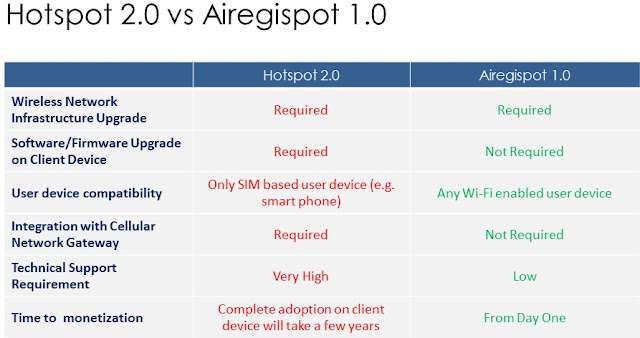The data
avalanche effect in cellular networks
Exponential growth in smart mobile devices has fuelled demand for data service on wireless network. As an effect, likes and usage for bandwidth hungry web application is also growing among users. In past, cellular network was primary source for mobile users to quench their daily data need. But now, with multi-fold increase in their data appetite and lack of speed/bandwidth in traditional cellular networks, these mobile users are often left unsatisfied.
Today’s users have already started using “Phablet”, a device that can be used for both internet browsing and calling and looks like a tablet. These new generation gadgets are designed to be “Aways On” device and rarely turned off or shutdown. Hence, as soon as they connect to the network, various apps running on these devices start establishing persistent connections to their corresponding web service. Unlike voice call session, data session established by these devices rarely terminate. They keep consuming resources over the air. As the number of such devices grow, it becomes extremely difficult for cellular provider to handle exploding data upload/download requests and deliver promised quality of service to end user.
Today’s users have already started using “Phablet”, a device that can be used for both internet browsing and calling and looks like a tablet. These new generation gadgets are designed to be “Aways On” device and rarely turned off or shutdown. Hence, as soon as they connect to the network, various apps running on these devices start establishing persistent connections to their corresponding web service. Unlike voice call session, data session established by these devices rarely terminate. They keep consuming resources over the air. As the number of such devices grow, it becomes extremely difficult for cellular provider to handle exploding data upload/download requests and deliver promised quality of service to end user.
Diaspora of
mobile users
A drift in user’s tendency to use data service as a new medium of communication is an alarming sign for cellular operators. It means, soon the above symptom may lead to fall in total number of voice call per circle. Following are the key reasons for user’s diaspora from cellular network:
- Availability of competitive wireless technology for offering wireless internet access: Even 3G/4G technology that offers high speed fails to make economic sense as the cost of one byte of user data is much higher in cellular networks compared to competitive Wi-Fi technology. One of the prime reasons for this multi-fold increase in the cost can be attributed to costly licensed frequency spectrum used by cellular networks to run data networking services. Wi-Fi uses unlicensed frequency spectrum and hence there is no cost associated with it. Hardware gears needed to implement a Wi-Fi network is also come cheap compared its cellular counterpart.
- User’s tendency to pull data content as per their convenience (both with respect to time and location): Majority of user base has already high speed broadband connection available at home or at workplace which is sufficient to meet their requirement. Though, there is high affinity among users for data applications, users themselves control schedule of accessing data applications and hence they plan it as per the availability of the service and convenience.
- Free wireless infrastructure for Internet access: A lot of local businesses are seeing great incentive for them in offering free Wi-Fi internet access to the customers. Businesses are leveraging wireless networking infrastructure as a customer engagement, loyalty and brand building tool. On the other hand, users find free Wi-Fi service as a good alternative to connect to the Internet when they are away from home or workplace.
Call to
action
Operators need to focus on creating their foot–print of Wi-Fi networks at public places such as marketplace, railway stations, bus stand etc. While doing this they must ensure following:
- User’s privacy and data protection: They must focus on building public Wi-Fi network which can provide privacy and data protection to all its users without requiring user’s involvement or dependency on third party client software or apps.
- Seamless internet access: Users must be able to access internet seamlessly. An operator run Wi-Fi network should be simple to connect and access the Internet.
- Collaboration versus domination: There are businesses which own and run their Wi-Fi network. Instead of trying to dominate, it would help cellular operators if they can simply collaborate with businesses and help build more Wi-Fi prints.
- Low cost wireless infrastructure: Operators can further think of reducing the overall cost of Wi-Fi network by choosing smarter and cost effective solution available in the market.
- Prepare to migrate to Hotspot 2.0 (HS 2.0): There is a huge gap between how today’s public Wi-Fi hotspot network is implemented and used and what HS 2.0 standard has proposed. The new standard also requires software/firmware upgrade on both wireless network and user equipment. Operators in country like India are going to face problem of managing heterogeneous set of mobile devices (devices with and without HS2.0 support). Operator should use Wi-Fi system that can be used to run multiple networks concurrently including HS2.0 enabled wireless network.

